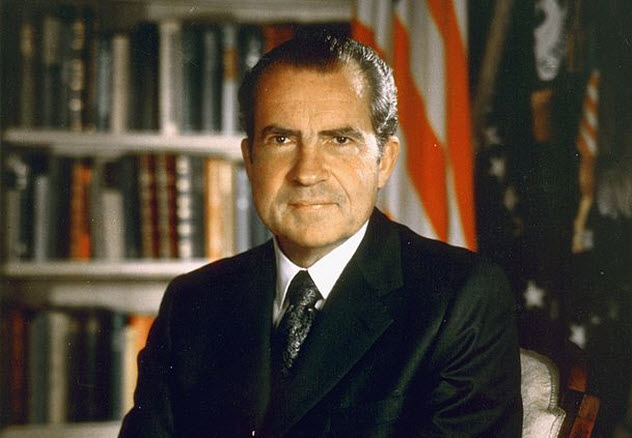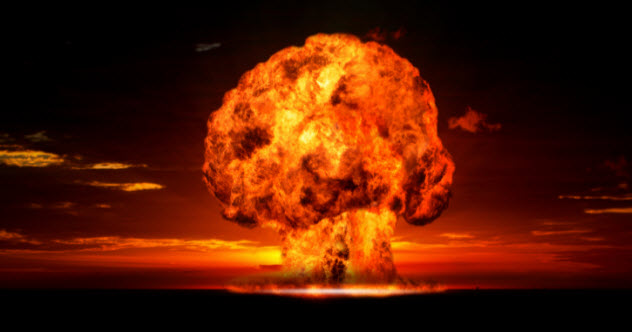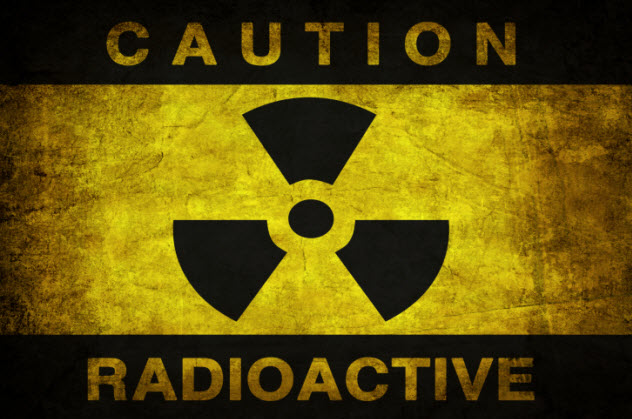 Music
Music  Music
Music  History
History 10 Less Than Jolly Events That Occurred on December 25
 Weird Stuff
Weird Stuff 10 Funny Ways That Researchers Overthink Christmas
 Politics
Politics 10 Political Scandals That Sent Crowds Into the Streets
 Weird Stuff
Weird Stuff Ten Bizarre Facts About The Doge Meme
 Our World
Our World 10 Ways Your Christmas Tree Is More Lit Than You Think
 Movies and TV
Movies and TV The 10 Coolest Stars to Set Sail on The Love Boat
 History
History 10 Things You Didn’t Know About the American National Anthem
 Technology
Technology Top 10 Everyday Tech Buzzwords That Hide a Darker Past
 Humans
Humans 10 Everyday Human Behaviors That Are Actually Survival Instincts
 Music
Music 10 Surprising Origin Stories of Your Favorite Holiday Songs
 History
History 10 Less Than Jolly Events That Occurred on December 25
 Weird Stuff
Weird Stuff 10 Funny Ways That Researchers Overthink Christmas
Who's Behind Listverse?

Jamie Frater
Head Editor
Jamie founded Listverse due to an insatiable desire to share fascinating, obscure, and bizarre facts. He has been a guest speaker on numerous national radio and television stations and is a five time published author.
More About Us Politics
Politics 10 Political Scandals That Sent Crowds Into the Streets
 Weird Stuff
Weird Stuff Ten Bizarre Facts About The Doge Meme
 Our World
Our World 10 Ways Your Christmas Tree Is More Lit Than You Think
 Movies and TV
Movies and TV The 10 Coolest Stars to Set Sail on The Love Boat
 History
History 10 Things You Didn’t Know About the American National Anthem
 Technology
Technology Top 10 Everyday Tech Buzzwords That Hide a Darker Past
 Humans
Humans 10 Everyday Human Behaviors That Are Actually Survival Instincts
10 Unsolved Nuclear Mysteries
The Vela Incident, in which it’s believed that two unknown nuclear weapons detonated near Antarctica, may be the most famous nuclear mystery. However, there is no shortage of mysteries and strange occurrences in the world of nuclear science.
10 Dying Nuclear Scientists In India And Iran

Over the past decade, a string of dead nuclear scientists has concerned many in India. While authorities have ignored the deaths or labeled them as either “unexplained” or “suicides,” many locals are raising questions about the long list of their best and brightest who have died under questionable circumstances.
Two high-ranking engineers on India’s first nuclear-powered sub were found dead on a train line. Although it’s believed they were poisoned, their bodies were left on the tracks to make their deaths look like suicides. However, the police came to a different conclusion. They dismissed the case as two “routine accidents.”
Another man was strangled in his sleep. Some of the investigators tried to pass the death off as a suicide, even though the evidence for murder was overwhelming. Still, no arrests were made. Two other scientists were burned to death in their lab, although they weren’t working with flammable materials when the fire broke out. One official was abducted by an armed group but managed to escape. Again, authorities were quick to brush off the incidents as isolated.
The trend parallels the deaths of Iranian nuclear scientists, but the Iranian deaths are getting far more media attention. The Iranian scientists are being killed with car bombs. Iranian officials and media lay the blame on Israel, which categorically denies any involvement. Fingers are also being pointed at the US, which likewise denies having anything to do with the killings.
9 Mysterious Drones Over France’s Nuclear Plants

In 2014, unidentified drones were spotted over 13 of France’s 19 nuclear power plants. The areas both above and around nuclear plants are restricted and monitored by the French air force, but the drones were so small that they went undetected by the military’s equipment. Although the French government says there’s no threat to the plants, it has devoted €1 million to create systems to detect and eliminate any similar drones.
Still, no one knows who’s been launching the drones. Briefly, authorities thought they’d solved the case when they arrested three people who were preparing to launch a drone near one station in central France. But their machine was a simple, cheap model, not the more elaborate kind spotted at the other plants. Nevertheless, the three face possible prison sentences and fines of €75,000.
The drones that have been sighted are believed to have cost several thousand euros and were flown in a coordinated effort. At one plant, army helicopters were sent out to intercept them, but the machines were efficient enough to avoid the helicopters. The drones and whoever is piloting them have raised concerns over the vulnerability of France’s nuclear sites. Some are pointing to Greenpeace, which has used drones before and is outspoken about France’s nuclear program. But the group is only one of several possible suspects, and there is currently no evidence to support any theory.
8 What Is Fogbank?

When the US Navy set out to refurbish their W76 warheads, a significant part of their nuclear arsenal, they ran into a serious problem. Once they opened up the warheads, they discovered a classified material code-named “Fogbank” that needed to be replaced. Except that no one knew how to make it.
Fogbank was made in the 1970s and ’80s, and there were very few records detailing its creation. Anyone involved with it had already left the agency. This led to a $23 million attempt to create a replacement material, which ultimately failed. Another $69 million was spent to rediscover Fogbank’s manufacturing process, which was successful.
Although Fogbank is critical enough for the Navy to invest $92 million of taxpayer money to recreate it, no one except those involved in the project knows exactly what it is. A former manager in its development went on record as saying that its composition, use in the weapon, and method of creation are all classified. Experts suspect that it’s a kind of aerogel that functions as an “interstage” in the warhead, surrounding the fission and fusion parts of the bomb and transferring energy between them. Whatever it is, it’s a reminder that even the most critical pieces of technology can fall victim to the “fog” of time.
7 The Karen Silkwood Mystery
In 1974, 28-year-old Karen Silkwood was a lab technician at the Kerr-McGee plutonium plant. Believing that the plant suffered numerous quality-control issues and lax safety procedures, she was elected to its union committee and testified before the US Atomic Energy Commission (AEC) about conditions there.
With a folder of documents detailing the issues, Silkwood headed to a meeting with a New York Times journalist on November 13. Before she got there, however, she swerved off the road and hit a concrete wall. Silkwood died before she could deliver the information, and the documents were never recovered.
The police investigation found alcohol and prescription sedatives in her blood and concluded that she had fallen asleep at the wheel. But a private investigator working for the union found dents on the back of her car, suggesting that she could have been forced off the road.
The autopsy of her body revealed that she was suffering from serious radiation poisoning. A search revealed plutonium contamination in her kitchen, bathroom, and even a sandwich in her fridge. The plant’s lawyers suggested that she was emotionally unstable and affected by the sedatives she had been taking, causing Silkwood to poison herself.
Whether she was a lunatic who gave herself radiation poisoning or a murdered whistleblower, the Kerr-McGee plant closed a year after her death because the company buying the plant’s fuel rods complained of their poor quality and stopped buying them. The Silkwood case was put to rest.
6 The 1969 Nuclear Alert

In 1969, the Nixon administration secretly put US nuclear forces on high alert without explanation. The reason was so top secret that even the Chairman of the Joint Chiefs of Staff wasn’t briefed on it. Even now, no one can fully explain why the administration made such a potentially destabilizing move.
Declassified documents point to a connection with the Vietnam War, implying that the administration was flexing its muscles to show that they were willing to go to any means necessary to end the war. This is consistent with the Nixon “madman theory,” which suggests that he took a questionable approach to foreign relations.
According to the theory, Nixon governed in a manner that made him look insane so that hostile communist bloc nations would avoid provoking him because they feared a catastrophic response. The nuclear alert made it look like Nixon was readying a nuclear attack against North Vietnam to convince Moscow to put pressure on Hanoi to negotiate.
Yet other records imply that the alert was raised to deter a Soviet nuclear strike against China during the Sino-Soviet border dispute. Related documents suggest that Soviet leaders were indeed considering a preemptive strike against Chinese nuclear facilities at the time.
As even top-level military leaders were kept in the dark, Henry Kissinger is one of the few men still alive who knows what happened. In his memoirs, he may have referenced the event as connected to the border dispute, but it’s not clear. Regardless of the alert’s true purpose, it apparently had little impact on foreign relations. Still, we can’t say for sure because no one knows what the alert was trying to accomplish. Except for Kissinger and he’s not telling.
5 Did Israeli Spies Steal US Uranium?
Before and during the Cold War, the Nuclear Materials and Equipment Corporation (NUMEC) operated a nuclear facility in Apollo, Pennsylvania. The facility was shut down in 1983. But in the mid-1990s, a leak released radiation into the surrounding area. NUMEC’s owners are still dishing out millions to locals who have filed lawsuits for the various cancers it caused.
But even during its operation, NUMEC was host to another potentially devastating issue. Every nuclear site has a certain amount of natural loss from seepage, but NUMEC cataloged hundreds of missing kilograms. Several experts have suggested possibilities such as leakage through air vents. Others suggest that the loss was only on paper, a result of poor record keeping.
Meanwhile, some experts and intelligence officials have a different theory. They think that the uranium was stolen by Mossad spies. In the 1960s, Israel had been conducting covert operations around the world to secure nuclear materials. NUMEC’s founder, Zalman Shapiro, had contacts deep within Israel’s defense and intelligence bureaus. Several even visited the facility incognito.
The AEC, which was responsible for monitoring and overseeing uranium and plutonium shipments from private plants, stifled any investigation into the Israel connection because they wanted to keep the matter in-house. Later, the CIA director opened his own investigation because environmental samples from an Israeli reactor revealed the presence of a rare type of uranium that could only have come from NUMEC.
The CIA’s investigation into Shapiro showed that he had been in contact with one of Israel’s top spies as well as other important people from Israel’s intelligence community. Former employees claimed that they saw cans that were possibly filled with nuclear material at the facility’s loading bay. Also present were documents showing that the material was being sent to Israel.
When the NUMEC facility was finally decommissioned, 90 kilograms (200 lb) of the missing uranium was recovered, but a study soon found that 269 kilograms (600 lb) of uranium disappeared between 1957 and 1968. Over the next nine years, only 76 kilograms (170 lb) went missing, despite an increase in the amount of uranium processed. This was more than any estimate of reasonable loss. Eventually, the investigation fizzled out, leaving only speculation as to what had happened.
4 Did Polonium Kill Yasser Arafat?

In 2006, the Russian dissident Alexander Litvinenko was fatally poisoned with polonium-210, which made the weaponized substance famous. Easily detected in his system, it was a clear message about what would happen to opponents of the state. The substance, though, is also at the heart of a possible assassination a couple of years earlier.
When the Palestinian leader Yasser Arafat died in 2004 in France, his personal physician was upset by the French doctors’ failure to diagnose the illness leading to his death. The official statement was that Arafat had succumbed to a “mystery blood disorder.” He was interred without an autopsy at the wishes of his widow. But with Arafat’s death coming after a short and sudden deterioration, many Palestinians suspected poisoning.
In 2012, Al Jazeera carried out an investigation into the possibility of poisoning. Swiss tests found trace amounts of polonium-210 on his personal effects but stressed that the symptoms of Arafat’s death were not consistent with polonium poisoning. With the tests carried out years after Arafat’s death and such a high amount of polonium found, the Israeli government, suspected by Palestine of being involved in the matter, claimed that the polonium had to have been planted. The Israelis argued that the half-life of polonium is only 138 days, making it impossible for so much to be present on Arafat’s personal effects years after his death. Regardless, the body was exhumed and tested.
The independent tests were carried out in different countries. After Russian scientists tested the remains, they determined that the polonium poisoning theory was unsubstantiated. Swiss scientists, however, found significant levels of polonium in Arafat’s pelvis and ribs. They claimed that the skull and extremity bones tested in Moscow were both odd and unlikely samples to measure because they would not collect the highest levels of polonium. More samples were sent to a French lab, which also ruled out the possibility of poisoning. With so many conflicting findings, there is no clear-cut answer as to whether Arafat died from polonium poisoning or natural causes.
3 The Genoa Mystery Container

Millions of identical cargo containers pass through the port of Genoa. Many are filled with scrap metal because the need for cheap sources has created an enormous international business. With so many containers traveling throughout the world, it’s also an easy way to smuggle anything from drugs to illegal immigrants. But out of those millions of boxes in Genoa, one in particular caused the port an enormous amount of trouble.
All cargo containers get checked for radiation, although scanners are set to ignore low levels because many everyday items, such as kitty litter, are slightly radioactive. While this facilitates commercial shipping, it does pose a risk because items like nuclear bombs also emit low levels of radiation that might be overlooked. In 2010, however, one cargo container emitted radiation so strong that the scanners couldn’t even read its maximum value. It was off the charts.
The box was traced to a Bermuda-based shipping concern named Textainer. When questioned, the company said that the box had been leased to the Mediterranean Shipping Company. After that, it went to Saudi Arabia under the control of Sun Metal Casting, a scrap-metal dealer in the Arab emirate of Ajman. The authorities in Genoa determined that the radiation was being emitted by cobalt-60, but no one seemed to know how the highly radioactive material had wound up inside the box.
Also, no one wanted anything to do with it. Genoa tried to send the container back to Saudi Arabia and then the United Arab Emirates, but both countries refused to take it. As the radioactive container couldn’t be shipped, it remained at the port for a year, sparking protests and strikes from port workers. Finally, it was decided that the port and the Italian government would split the $700,000 disposal fee.
When the cobalt was found, it was a small cylinder likely used in either a medical device or a machine that sterilizes food. But where the cobalt came from and how it ended up inside the container will probably never be known.
2 The Nazi Atomic Bomb

The world would be very different had the Nazis succeeded in creating the atomic bomb. For the US, it took 125,000 people and the equivalent of $30 billion to develop its first two nuclear weapons. The German effort had only a fraction of the US budget, but its physicists were among the best in the world. Ever since the dissolution of the Nazi nuclear weapon project, there has been an unanswered question: Why didn’t the Nazis succeed?
An award-winning play titled Copenhagen clings to the theory that the head of the nuclear project, Werner Heisenberg, purposely sabotaged the project because he knew the devastation that a nuclear weapon would ultimately cause. Others believe that the entire staff was reluctant to build the weapon for the same reason.
While these theories are interesting, they have few adherents. In a letter, Heisenberg implied that he had stated his reluctance to finish creating the bomb in a meeting with his mentor, Niels Bohr. Outraged by the implication, Bohr responded with a number of unsent letters, all disputing that Heisenberg had tried to prevent the bomb from being built. Among the German physicists who worked on the project, a few have tried to take the moral high ground. But most people chalk up all of these claims to revisionist history.
Aside from the sabotage theory, there are other possible explanations as to why Germany wasn’t able to complete its bomb before the US did. For one, German cities were being carpet bombed while the US was investing massive amounts of its resources into the Manhattan Project. With its industry crippled, Germany couldn’t supply the materials necessary to create a working bomb.
Another theory is that the German team just didn’t push hard enough. They also suffered from the Nazi’s well-known anti-Semitism. “Jewish physics,” as they called it, was looked down upon. Also, many of the leading Jewish scientists had fled to the US and joined the Manhattan Project.
Some assume that the final nail in the project’s coffin was German arrogance. If they were having difficulties, they assumed it would be impossible for the Allies to build a bomb. Records show that when the Germans were captured and given the news about the bombs dropped on Japan, they were shocked that the US had succeeded in creating them.
1 Where Is All The Missing Nuclear Material?

From 1993 to 2013, there were 2,477 confirmed reports of either criminal or unauthorized incidents involving nuclear material. Of those, 424 were unauthorized possession and related criminal activities, 664 involved theft or loss, and 16 involved unauthorized possession of highly enriched uranium or plutonium. Some of those 16 incidents were attempts to sell or traffic uranium or plutonium across international borders.
But these were just the confirmed events reported by states participating in the International Atomic Energy Agency’s Incident and Trafficking Database system. The frightening question is: Where is all the missing nuclear material for which we can’t account?
While the worst case scenario is a terrorist organization creating a portable nuclear device, many are also worried about “dirty bombs,” which are designed to deliberately spread a massive amount of radiation. Although experts believe that the radiation from such a device would cause only a small increase in the risk of cancer, the fear and economic repercussions would be far greater. Even if someone could obtain radioactive material, some experts believe that the risk of a dirty bomb is low because the resources required to create and transport such a bomb would be enormous.
Aside from lost material being used to create a bomb, there’s concern that people might inadvertently find radioactive material and mishandle it. In Thailand in 2000, someone discovered a locked box in a scrap pile, cut it open to see if the contents were valuable, and found a piece of radioactive material inside. In just a short time, the people who handled that cobalt received fatal doses of radiation.
Mexico has had four thefts of radioactive material since 2013. In at least one incident, the thieves inadvertently took a capsule of iridium-192 while stealing a van they thought was full of other goods. In addition to lost or stolen nuclear material, countries with high levels of poverty that have atomic programs run the secondary risk of accidental exposure, whether from bumbling thieves or innocent civilians.
Nathan keeps a Japan blog where he writes about the sights, expat life, and finds Japanese culture in everyday items. You can also find him on Facebook and Twitter.








